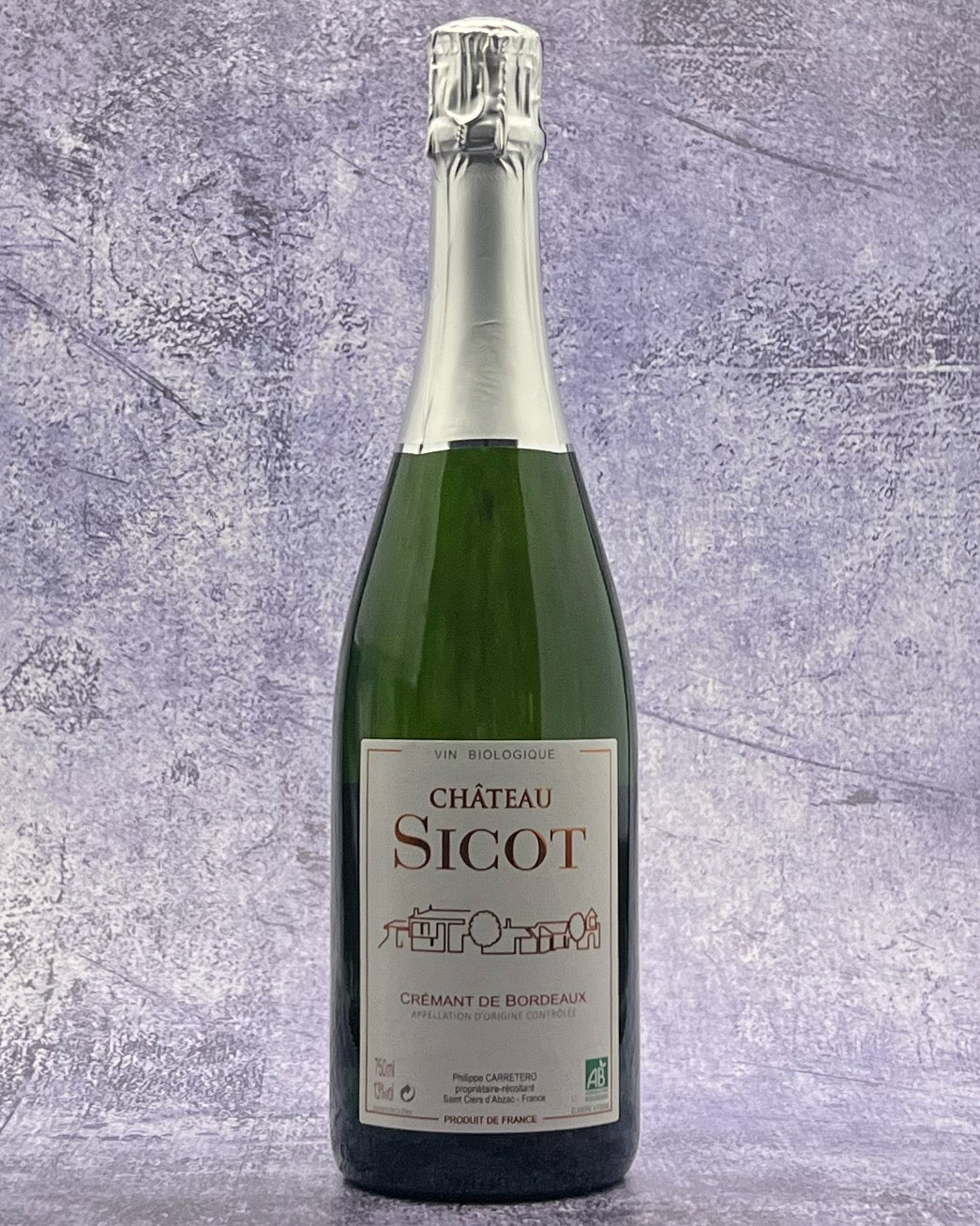Description
From: Bordeaux, France
Varietals: Colombard, Sémillon
Tasting Notes: This charming sparkling wine is a standout example of the appellation, crafted using a blend of Semillon and Colombard grapes from a small, family-run winery committed to organic farming and sustainability. The appearance is a delicate straw yellow, and on the nose, this Crémant reveals a bright bouquet of stone fruit, citrus, and a hint of toasted brioche. The palate echoes the nose with prominent notes of lemon, peach, and subtle layers of brioche, creating a beautifully balanced harmony of flavors. The fine bubbles and zero dosage lend to the wine's refreshing and crisp character, while the high clay-siliceous plateau terroir imparts a pleasant minerality. With a long, satisfying finish, the NV Château Sicot Crémant de Bordeaux is an exceptional expression of the region.
"A lovely crémant with pleasing notes from a Bordeaux white blend, it's both lively and elegant hailing from a terroir of a high clay-siliceous plateau." –Organic Authority
Pairing: Fantastic on its own and a versatile and delightful companion to a variety of dishes, perfect for springtime dining. Its lively acidity and dry, yet rich, palate allow it to complement seafood dishes such as crab cakes, sushi, and halibut, without overwhelming the delicate flavors. The stone fruit and citrus notes provide a lovely counterpoint to the sweetness of the crab meat and the savory soy and wasabi notes in sushi. The wine's subtle brioche undertones pair well with the buttery, flaky texture of halibut (or white fish like trout and cod- check out the recipe below!), creating a memorable dining experience. Enjoy the NV Château Sicot Crémant de Bordeaux as an aperitif, or share it with friends and family over a delightful seafood spread for a truly delightful afternoon or evening.
Roasted Fish With Lemon, Sesame and Herb Bread Crumbs
By Ali Slagle
About. This crémant comes from a tiny, ten-person team winery with a 50-year history. The head of the family business, Philippe Carretero (an engineer-enologist), has led this team for about 30 of the 50 years Chateau Sicot has existed. Compared to many of the wineries around the world and even in Bordeaux, this Château is small. It may be because of their size that they’ve managed to successfully (& quickly) commit and convert their vineyards over to organic farming, achieving ECOCERT certification in 2009.
The process of achieving an organic certification is time-consuming and expensive, but the benefits far outweigh the costs. They’ve seen the life of their soils strengthen, preventing erosion & the deterioration of microorganisms vital to keeping the ground healthy. Their vines have become healthier and more resistant to disease as well, all resulting in better fruit, which yields better wine!
The Château Sicot vineyard extends over a high clay-siliceous plateau. The subsoil is clay with traces of iron filth, where in places, we find beds of clayey sand or gravel. After years of intensive cultivation, soil preservation has become an issue for farmers, and organic and sustainable agriculture has helped a lot with soil quality on the estate thus far.

